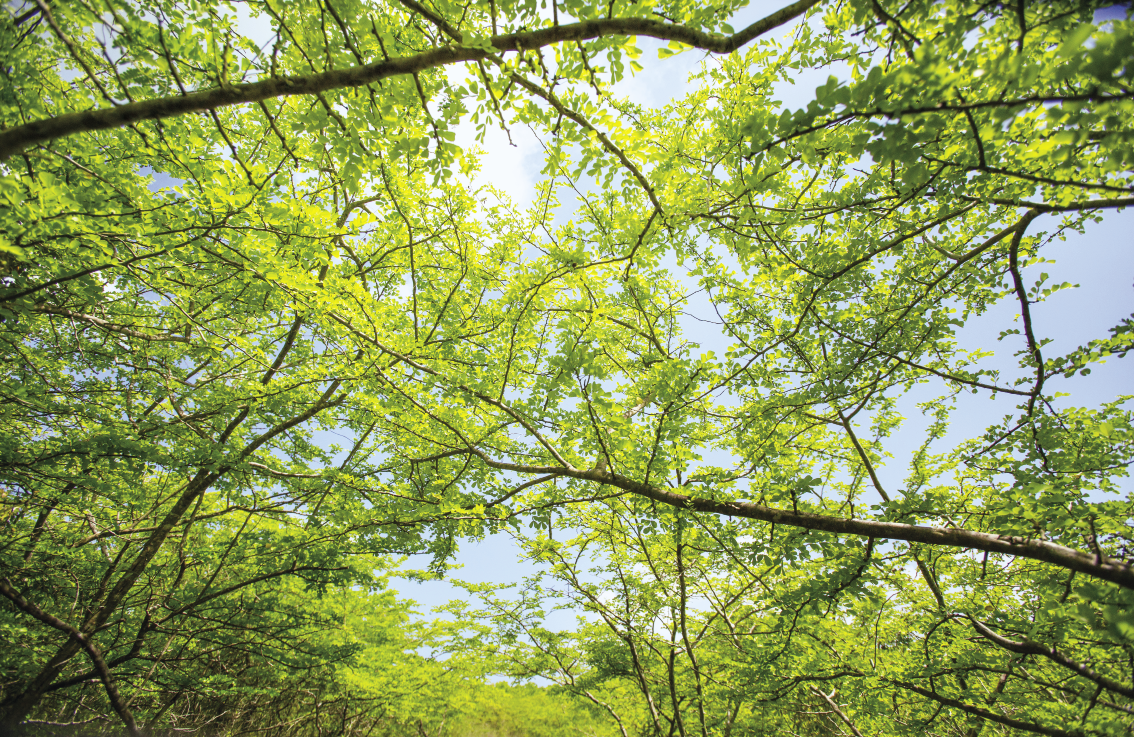A tree of death, strangling vines, Cayman ghosts and the intriguing case of a world-famous botanist plotting to murder his wife.
There are many tales along the Mastic Trail – one of Cayman’s best-kept secrets when it comes to inland adventures.
The 2.3-mile excursion into the heart of a 2 million-year-old forest is as much about the history of the island as it is about the extraordinary plant life and creatures that inhabit it.
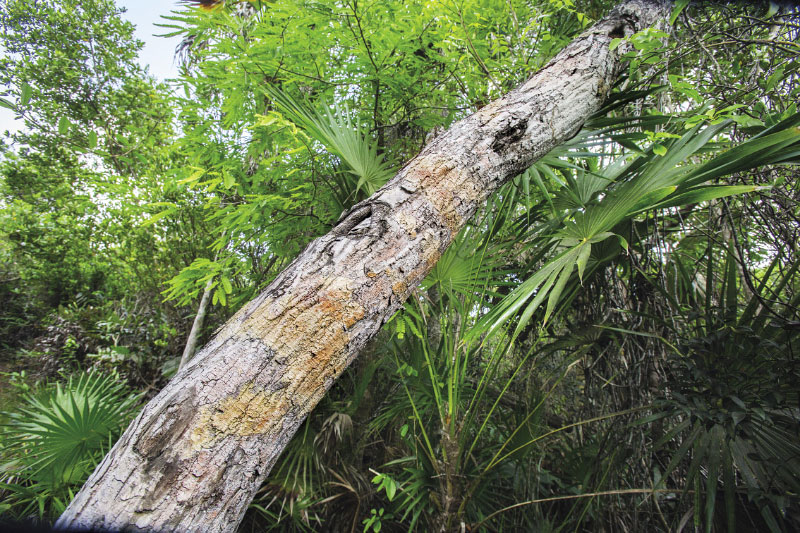
The shaded nature trail runs through the Mastic Reserve, the largest tract of untouched old growth forest remaining on Grand Cayman. It’s managed by the National Trust for the Cayman Islands, a non-profit which seeks to preserve Cayman’s natural environment and heritage.
Named after the mighty yellow mastics, the path passes through a variety of habitats: black mangrove wetland, stands of royal palms and silver thatch palms, abandoned agricultural land and ancient dry forest.
The historic footpath was created more than 100 years ago by William Steven Watler and his contemporaries, and used as a major thoroughfare. As coastal roads and the modern Frank Sound Road came on stream, the trail fell into disuse. In 1994 work began to clear the overgrown trail and restore it, opening to the public a year later.
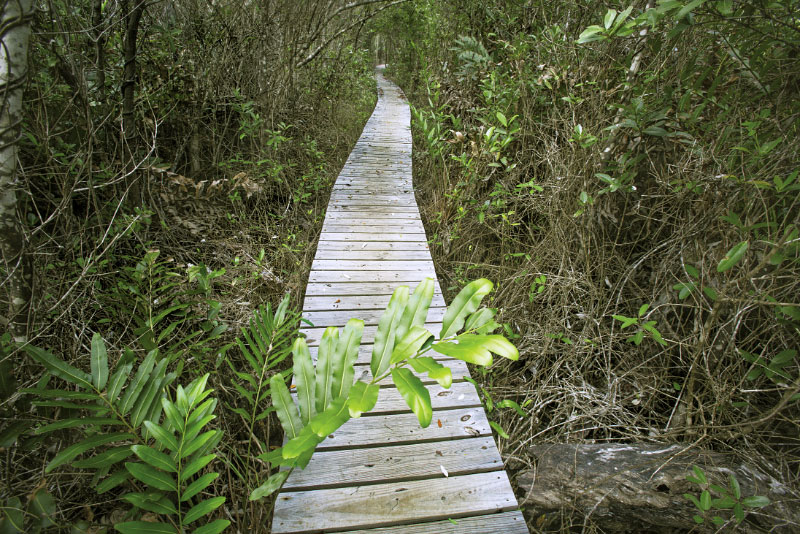
Visitors can opt to walk it on their own (just be sure to pick up a trail guide booklet at the National Trust headquarters at Dart Family Park in South Sound) or arrange for a guided tour – which is highly recommended.
Myself and three companions – a friend on-island and two of her family members escaping Alberta’s deep-freeze conditions – met up with guide Stuart Mailer on a weekday morning (tours are held Tuesday through Friday mornings) to explore.

While I’m not normally big on organized tours, this trek wouldn’t have been half as much fun (or fascinating) without one. Hikers would certainly zip by interesting flora and fauna, not to mention miss out on local lore. Our guide had us licking salt off a black mangrove leaf (it tastes like a saltine cracker), learning about the prickly “Shake Hand” tree and listening to a tale about a climber’s perilous adventure in helping identify a tree species not previously recorded in Cayman.
Stuart has been doing these tours for more than eight years, and you can tell it’s still a labor of love. Personable and knowledgeable, Stuart is a scientist with a background in marine biology and geology, and is well-versed in bird life.
The three-plus-hour trek was peppered with impromptu stop-and-look moments as Stuart pointed out several fine-feathered friends and other critters. We spotted woodpeckers, Cuban bullfinch and bright-yellow vitteline warblers, a rare, near-threatened species found only in the Cayman Islands and the Swan Islands in Honduras.
We heard the squawk of Grand Cayman parrots, an endemic and near-threatened species that is Cayman’s national bird.
There are 13 endemic bird sub-species in Cayman, most evolving in the mastic forest. Numerous migratory birds can be spotted, including yellow-bellied sapsuckers. These woodpeckers return each year to their favorite tree, drilling neat rows of holes in the bark to lap up the sugary sap.
Among the flora on the trail are mahogany, palms, tamarind, almond, mango, wild fig, calabash, the rare and endangered ghost orchid, wild banana orchid (Cayman’s national flower), resurrection ferns, red birches and black mastics (once thought to be extinct).
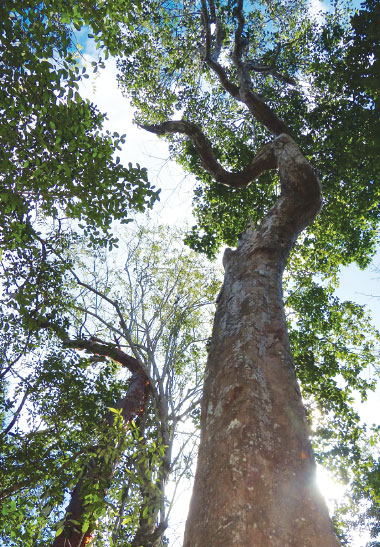
The halfway point is marked by a giant centuries-old yellow mastic. Before Hurricane Ivan hit in 2004, it was heavily colonized by strangling Balsam vines as thick as a man’s thighs. The powerful winds managed to rip them down but scars in the bark remain where the vines were tightly spiraled around its trunk. The weight of these vines can “choke” trees to the point of killing them.
Stuart showed us “duppy” trees which are bent into odd shapes. The folklore is that duppies – Cayman ghosts – sat on the trees overnight causing them to distort into strange forms.
There are plants to be avoided at all costs, including maiden plum and manchineel (which bears another name in Spanish, arbol de la muerte, which literally means “tree of death”); the first can cause an intense, itchy rash, the second can severely burn your skin – and can even be fatal. The fruit look like small green apples but are extremely poisonous.

We picked up our pace past the manchineel tree – it had rained lightly and we wanted to avoid any possible drops carrying its diluted sap (which can still burn your skin).
Critters encountered along the way included a hermit crab, butterflies, tree frogs and blue-throated anoles (a species found only on Grand Cayman). Although we were warned we would see snakes (they are harmless) they thankfully stayed out of our way. We lucked out as there were few mosquitoes, which can be bothersome on the path. The sometimes-aggressive Greater Antillean grackle, known in Cayman as ching-ching, was also nowhere to be seen.
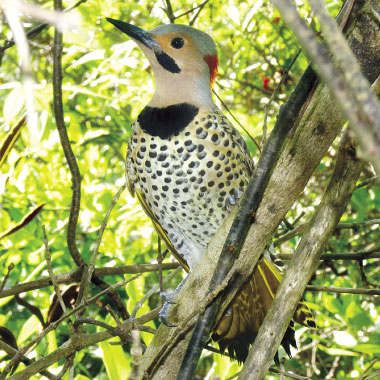
While the Mastic Trail is a leisurely nature walk, the terrain can be challenging as it is rocky, uneven and swampy. A must is sturdy walking shoes (no flip flops) and plenty of water. Bring a snack, sunscreen, hat and bug spray. Though it is shady almost all the way, it can get hot and humid.
As the trail is not a loop, it’s recommended to park vehicles at the north trailhead entrance and south entrance – or else you end up backtracking. The south entrance is off Frank Sound Road, and the north entrance is off North Side Road (on the road to Rum Point). Look for the signs. It can get a bit confusing as Google Maps shows the Mastic Trail as a single location, which has caused some visitors to miss the tour. GPS guidance may mislead visitors to the southern entrance.
You’ll need at least two to three hours to enjoy the Mastic Trail on a guided tour. It’s an easy-going walk, and Stuart’s engaging anecdotes, knowledge and insights brought Cayman’s natural history to life.
As for the botanist’s murder plot – that’s a tale best left for Stuart to tell.


















